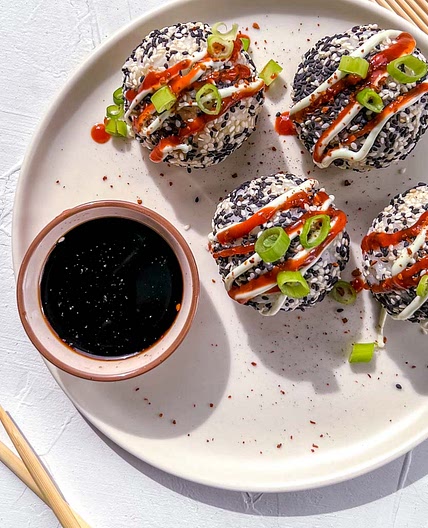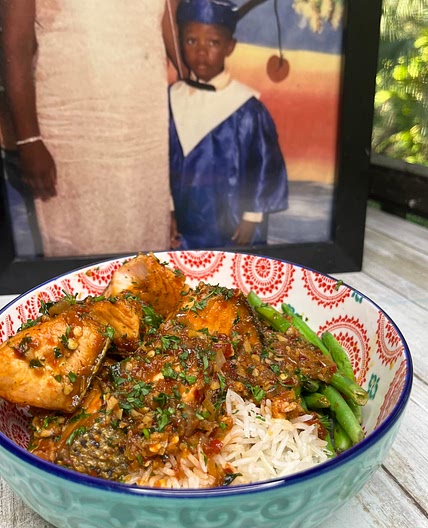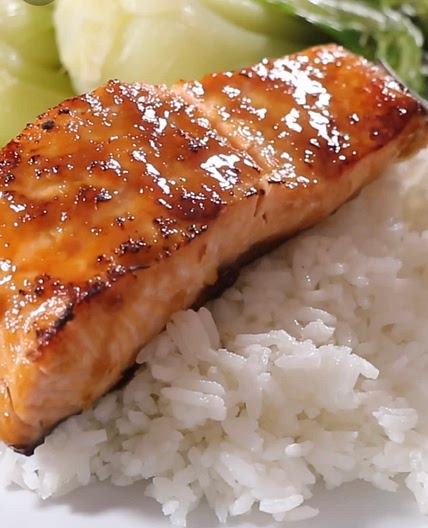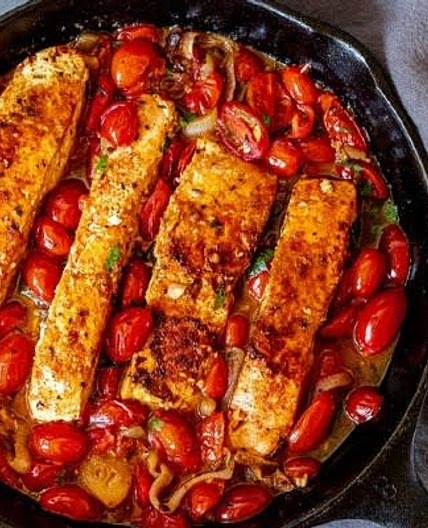Salmon
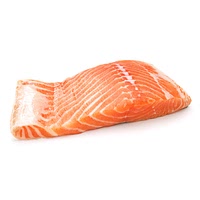 Fridge
FridgeSalmon is a popular and versatile fish that is well-loved by home cooks and chefs alike. From honey garlic glazed salmon to smoked salmon ribbon, the tender meat and flavorful skin have ensured it’s popular choice for all meals and cuisine types. When it comes to the different types of salmon, there are six varieties: (1) King or chinook salmon: Thick and high in fat, it is widely considered to be the best salmon. Growing on average to 40 lbs, their size contributes to their fattiness and rich flavor, as well as their heftier cost. (2) Sockeye or red salmon: With bright red flesh, these salmon are packed with flavor and less fatty than King salmon. Ranging from 5 to 15 lbs when full grown, they are also leaner and cheaper. (3) Coho or silver salmon: Bright red flesh and a medium fat content give this salmon a milder and more subtle flavor. They generally weigh around 23-24 lbs. (4) Pink or humpback salmon: Ranging from a mere 2-6 lbs, these salmon may be small, but they’re also one of the most common Pacific salmon. They have a light pink flesh and mild flavor with a low fat content. They are often canned but can also be found fresh, frozen, and sometimes smoked. (5) Chum, dog, keta, or silverbrite salmon: Weighing 8 lbs on average, these smaller salmon have a pale to medium red flesh with a lower fat content. They are most often sold canned or frozen. (6) Atlantic salmon: Unlike Pacific salmon, there is only one type of Atlantic salmon, the Salma salar. Atlantic salmon cannot be purchased wild. This is because all Atlantic salmon is farm-raised due to their endangered status. With pink-orange flesh, it has a mild flavor. It is also widely available year-round and is quite affordable. Although farmed salmon is somewhat controversial, farming methods have improved in recent years. You might see this labeled as Norwegian salmon or Scottish salmon too. Rich with heart-healthy omega-3s and high in protein, salmon is an incredibly healthy fish. Omega-3 fatty acids are an essential fat that can only be derived from your diet since they’re not produced by the body. They are known to help lower blood pressure, reduce inflammation, and reduce the risk of cancer. Omega-3s are often sold as a supplement, but you can get them naturally from salmon too.
Salmon nutrition and vitamin info per 100g
| Energy | 186.66000366210938 | kcal |
| Total Fat | 11.729999542236328 | g |
| Carbohydrate Total | 0 | g |
| Sugars | 0 | g |
| Protein | 20.25 | g |
| Sodium | 48 | mg |
| Fiber | 0 | g |
2525 recipes to cook with Salmon
Salmon substitutes
- Regular substitute
- Vegan substitute
Salmon equivalents and varieties
Salmon safe diets
Salmon cooking tips
 Samsung Food
Samsung FoodFALSE
 Samsung Food
Samsung FoodThe best way to cook salmon is skin-side down at a medium-high temperature for 5-7 minutes, then turn the heat down to low and flip the fillet for a couple of more seconds on the other side.
 Samsung Food
Samsung FoodAlways cook salmon skin side down to avoid saggy skin.



